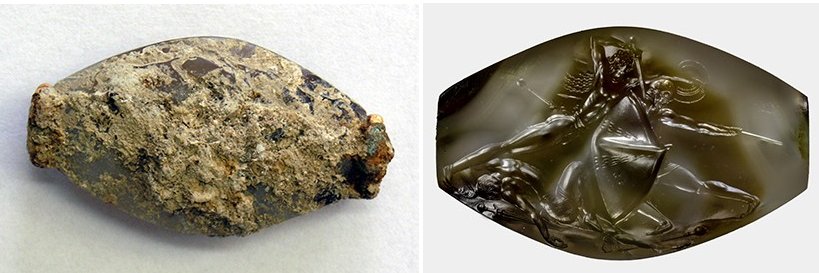Rare Minoan Sealstone Is A Miniature Masterpiece Unearthed In 3,500-Year-Old Tomb Of Powerful Mycenaean Warrior
A. Sutherland - AncientPages.com - A rare Minoan sealstone in the treasure-laden tomb of a Bronze Age Greek warrior has been discovered by University of Cincinnati archaeologists.
The grave itself - located in an olive grove near the ancient city of Pylos was discovered in 2015 by Jack L. Davis and Sharon R. Stocker, archaeologists at the University of Cincinnati who had excavated the site for more than 25 years.
The 3,500-year-old tomb belonged to a powerful Mycenaean warrior or priest buried around 1500 BC in southwest Greece. In the undisturbed and intact tomb, there were found four gold signet rings that have challenged accepted wisdom among archaeologists about the origins of Greek civilization.
Left: The limestone-encrusted sealstone was discovered lying face-down near the right arm of the Griffin Warrior. Courtesy of The Department of Classics, University of Cincinnati; Right: Due to the seal's small size and veining on the stone, many of the miniature details are only clearly visible via photomicroscopy. Courtesy of The Department of Classics, University of Cincinnati
After this discovery about a year later, excavations revealed another treasure, the so-called “Griffin Warrior”, an intricately carved gem, or sealstone, one of the finest prehistoric masterpieces of miniature Greek art ever discovered.
The “Pylos Combat Agate” that comes from tomb of the Griffin Warrior, which was hailed as the most spectacular archaeological discovery in Greece in more
Dig leaders Shari Stocker, a senior research associate in UC's Department of Classics, and Jack Davis, the university's Carl W. Blegen professor of Greek archaeology and department head said that it took a year of conservation works, and finally the seal revealed all its intricate details and the fierce prehistoric hand-to-hand battle.
An enlarged drawing of the stunningly detailed combat scene captured on an agate sealstone discovered by the University of Cincinnati's Sharon Stocker and Jack Davis. Tina Ross/Courtesy Department of Classics, University of Cincinnati. Color illustration/Ben Gardner, UC Creative Services
Davis and Stocker also said the Pylos Combat Agate’s craftsmanship and exquisite detail make it the finest discovered work of glyptic art produced in the Aegean Bronze Age. Some of the details on the sealstone are only a half-millimeter big.
“What is fascinating is that the representation of the human body is at a level of detail and musculature that one doesn’t find again until the classical period of Greek art 1,000 years later,” explained Davis. “It’s a spectacular find.”
The miniature masterpiece depicts a victorious warrior who, having already vanquished one unfortunate opponent sprawled at his feet, now turns his attention to another much more formidable foe, plunging his sword into the shielded man’s exposed neck in what is sure to be a final and fatal blow.
The scene conjures the sweeping and epic battles, larger-than-life heroes and grand adventures of Homer’s “The Iliad,” the epic Greek poem that immortalized a mythological decade-long war between the Trojan and Mycenaean kingdoms.
Left: The seal artist's attention to detail and use of stylized faces make the Pylos Combat Agate one of the finest works of prehistoric Greek art ever discovered. Courtesy of The Department of Classics, University of Cincinnati; Right: Many of the seal’s details, such as the intricate weaponry ornamentation, become clear only when viewed via photomicroscopy. Courtesy of The Department of Classics, University of Cincinnati
While the researchers can’t say that the image was intended to reflect a Homeric epic, the scene undoubtedly reflects a legend that was well known to Minoans and Mycenaeans, said Stocker.
The seal – most probably made on Crete - and other burial riches found within the tomb suggest that the man, known as the Griffin Warrior after the mythical animal depicted in his grave, was buried around 1450 BC.
See also:
Sophisticated Lenses Of Minoans Discovered In The Sacred Idaion Cave
Minoans: Mysterious, Advanced And One Of The Oldest Bronze Age Civilizations Of Europe
Genetic Mystery Solved: Ancient DNA Reveals Greeks Descended From The Minoans And The Mycenaeans
He held a respected position in Mycenaean society in times when the Minoan civilization of Crete was being transferred to cities of the Greek mainland.
An expert on Aegean art at the University of Vienna, Fritz Blakolmer, said that the sealstone is a miniature copy of a much larger original, probably a stucco-embellished wall painting like those found at the Palace of Knossos on Crete.
According to Blakolmer, the artist created this seal and used a magnifying glass, even though none has been found, and dismissed the possibility that people of that era had sharper eyesight than today.
In the spring of 2016, a UC-based team made a rich and rare discovery of an intact, Bronze Age warrior’s tomb dating back to about 1500 B.C. in the Pylos region of Greece. The Greek Culture Ministry declared the find the “most important to have been discovered [in continental Greece] in 65 years” by the Greek Culture Ministry.
The tomb revealed a remarkably intact skeleton, which UC researchers dubbed the “Griffin Warrior” for the discovery of an ivory plaque adorned with a griffin — a mythical beast with the body of a lion and the head and wings of an eagle — buried with him.
The 3,500-year-old shaft grave also revealed more than 3,000 objects arrayed on and around the warrior’s body, including four solid gold rings, silver cups, precious stone beads, fine-toothed ivory combs and an intricately built sword, among other weapons.
Written by - A. Sutherland - AncientPages.com Senior Staff Writer
Expand for referencesreferences
More From Ancient Pages
-
 Apollo Punished Rivals For Their Extraordinary Musical Skills
Featured Stories | Apr 19, 2022
Apollo Punished Rivals For Their Extraordinary Musical Skills
Featured Stories | Apr 19, 2022 -
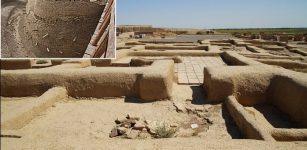 Climate Change, Not Genghis Khan Caused Demise Of Central Asia’s River Civilizations
Archaeology | Dec 17, 2020
Climate Change, Not Genghis Khan Caused Demise Of Central Asia’s River Civilizations
Archaeology | Dec 17, 2020 -
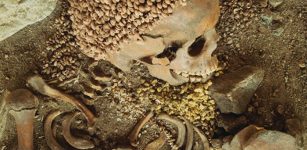 Broken Pebbles In Arene Candide Cave Shed New Light On Ancient Burial Practices
Archaeology | Mar 7, 2017
Broken Pebbles In Arene Candide Cave Shed New Light On Ancient Burial Practices
Archaeology | Mar 7, 2017 -
 Daily Life Of A Lady In Waiting – A Dangerous Profession Sometimes
Ancient History Facts | Aug 24, 2023
Daily Life Of A Lady In Waiting – A Dangerous Profession Sometimes
Ancient History Facts | Aug 24, 2023 -
 Gigantic Asipatra: Terrifying Mythical Monster Bird In Hindu Beliefs
Featured Stories | Jun 14, 2017
Gigantic Asipatra: Terrifying Mythical Monster Bird In Hindu Beliefs
Featured Stories | Jun 14, 2017 -
 Amazing Giant Rock Engravings Discovered In South America May Be The World’s Largest
Archaeology | Jun 5, 2024
Amazing Giant Rock Engravings Discovered In South America May Be The World’s Largest
Archaeology | Jun 5, 2024 -
 Frightening Hockomock Swamp: Unexplained Vanishings, Encounters With Unknown Creatures, And Ancient Mysteries
Featured Stories | Dec 5, 2024
Frightening Hockomock Swamp: Unexplained Vanishings, Encounters With Unknown Creatures, And Ancient Mysteries
Featured Stories | Dec 5, 2024 -
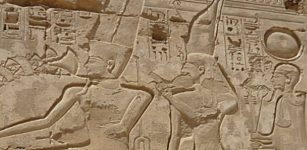 Khonsu: Enigmatic Egyptian Moon God, Healer, Protector And His Dark Side
Egyptian Mythology | Mar 12, 2019
Khonsu: Enigmatic Egyptian Moon God, Healer, Protector And His Dark Side
Egyptian Mythology | Mar 12, 2019 -
 Power Of Water In Beliefs Of Ancient Cultures
Featured Stories | Apr 9, 2019
Power Of Water In Beliefs Of Ancient Cultures
Featured Stories | Apr 9, 2019 -
 Baroque-Period Marble Skull Analyzed With Standard Forensic Anthropological Techniques
Archaeology | Feb 16, 2022
Baroque-Period Marble Skull Analyzed With Standard Forensic Anthropological Techniques
Archaeology | Feb 16, 2022 -
 Clapping To Show Appreciation Is An Ancient And Widespread Behavior
Ancient History Facts | May 16, 2016
Clapping To Show Appreciation Is An Ancient And Widespread Behavior
Ancient History Facts | May 16, 2016 -
 Remains Of Ancient Predators Shed Light On How Humans Did Or Didn’t Find Food
Archaeology | May 2, 2022
Remains Of Ancient Predators Shed Light On How Humans Did Or Didn’t Find Food
Archaeology | May 2, 2022 -
 Great Heathen Army’s Power Revealed – Previously Unknown Viking Sites And Routes Found In Britain
Vikings | Jan 3, 2025
Great Heathen Army’s Power Revealed – Previously Unknown Viking Sites And Routes Found In Britain
Vikings | Jan 3, 2025 -
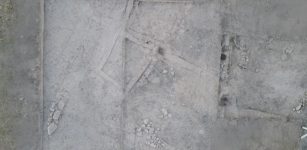 9,600-Year-Old Permament Settlement And Daily Tools Discovered In Turkey
Archaeology | Sep 2, 2022
9,600-Year-Old Permament Settlement And Daily Tools Discovered In Turkey
Archaeology | Sep 2, 2022 -
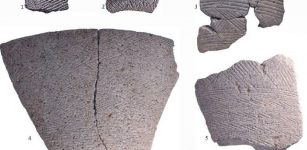 Mysterious Ancient ‘Triangle Code’ And Curious Markings Discovered On Vessels In Israel Reveal Something Interesting
Archaeology | Feb 11, 2019
Mysterious Ancient ‘Triangle Code’ And Curious Markings Discovered On Vessels In Israel Reveal Something Interesting
Archaeology | Feb 11, 2019 -
 Ratatoskr- Inhabitant Of Yggdrasil That Loves Intrigue, Strife And Gossips In Norse Beliefs
Featured Stories | May 28, 2020
Ratatoskr- Inhabitant Of Yggdrasil That Loves Intrigue, Strife And Gossips In Norse Beliefs
Featured Stories | May 28, 2020 -
 The First Conservationists May Have Been Early Pacific Islanders Who Started The Practice 3,000 Years Ago
Archaeology | Sep 29, 2021
The First Conservationists May Have Been Early Pacific Islanders Who Started The Practice 3,000 Years Ago
Archaeology | Sep 29, 2021 -
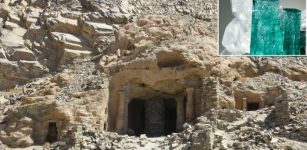 Emerald Production In Eastern Desert Of Roman Egypt – New Evidence
Archaeology | Apr 16, 2021
Emerald Production In Eastern Desert Of Roman Egypt – New Evidence
Archaeology | Apr 16, 2021 -
 Battle Of Assandun: The Great Battle In English History And A Brief Period Of Viking Dominion In England
Featured Stories | Apr 11, 2016
Battle Of Assandun: The Great Battle In English History And A Brief Period Of Viking Dominion In England
Featured Stories | Apr 11, 2016 -
 Ouroboros – Cosmic Serpent And The Self-Devourer – Universal, Powerful Symbol Of Great Antiquity
Ancient Symbols | Oct 22, 2017
Ouroboros – Cosmic Serpent And The Self-Devourer – Universal, Powerful Symbol Of Great Antiquity
Ancient Symbols | Oct 22, 2017

